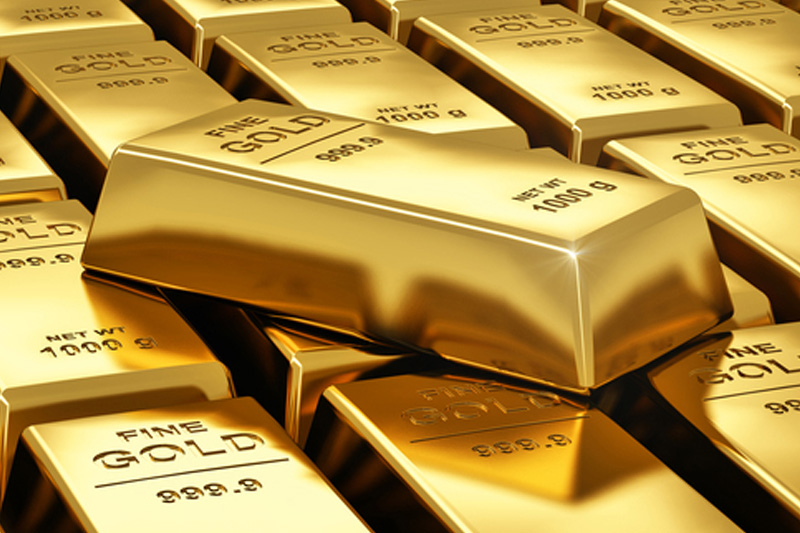Investing.com -- Gold ticked up on Friday, extending gains from the previous two sessions, in spite of solid U.S. inflation data which bolstered hawkish arguments for accelerated monetary policy normalization by the Federal Reserve this year.
On the Comex division of the New York Mercantile Exchange, gold for April delivery wavered between $1,220 and $1,235.20 an ounce, before settling at $1,231.20, up 4.90 or 0.40% on the day. For the week, gold fell slightly by less than $3 an ounce, halting a four-week streak of weekly gains. The precious metal still remains near 12-months highs reached late last week when it surged above $1,260 an ounce. Since the start of the year, gold has surged by more than 15% or $50 an ounce and is on pace for one of its strongest quarters in 30 years.
Gold likely gained support at $1,063.20, the low from January 4 and was met with resistance at $1,260.80, the high from Feb. 11.
On Friday morning, the U.S. Department of Labor said its Consumer Price Index (CPI) for January increased by 1.4% from the prior 12 months, gaining 0.7% from December's measure. The Core CPI Index, which strips out volatile food and energy prices, also rose by 0.3% from the prior month, considerably above analysts' expectations of a 0.1% gain. On an annual basis, Core CPI increased by 2.2%, also above forecasts of 2.1%.
The headline reading, though, for monthly CPI remained flat, slightly above expectations for a decline of 0.1%. It came as energy prices crashed by nearly 3% on the month, dragged down by a 4.8% decline in monthly gasoline prices. On the upside, the services component surged by 3.0%, led by increases in medical care and prescription drug prices, while rent and owners' equivalent rent also moved higher.
In minutes from the Federal Open Market Committee's January meeting, released earlier this week, several dovish members said they wanted to see "direct evidence" that long-term inflation was moving toward the committee's objective before raising interest rates again. The Core PCE Index, the Fed's long-term gauge on inflation, has remained below its targeted goal of 2% for every month over the last three years. Following several weeks of significant global market volatility to open the year, the members noted that monetary policy was "less well positioned to respond effectively to shocks that reduce inflation than to upside shocks."
Though inflation has been restrained by temporary factors from a stronger dollar and the downturn in oil prices, Fed Cleveland president Loretta Mester noted on Friday that long-run inflation expectations have still been "relatively stable." In a speech on the economy and monetary policy at the Global Interdependence Center in Sarasota, Florida, Mester said she expects the Fed to continue to raise rates gradually if the economy remains strong. On Thursday, Fed San Francisco president John Williams described a gradual rate hike path as the "best course" of action for the FOMC.
Any rate hikes by the Fed this year are viewed as bearish for gold, which struggles to compete with high-yield bearing assets in rising rate environments.
The U.S. Dollar Index, which measures the strength of the greenback versus a basket of six other major currencies, fell more than 0.20% to an intraday low of 96.93. With several hours left in Friday's session, the index is on pace to close slightly higher for the week.
Dollar-denominated commodities such as gold become more expensive for foreign purchasers when the dollar appreciates.
Silver for March delivery lost 0.027 or 0.17% to 15.405 an ounce.
Copper for March delivery gained 0.004 or 0.22% to 2.076 a pound.
